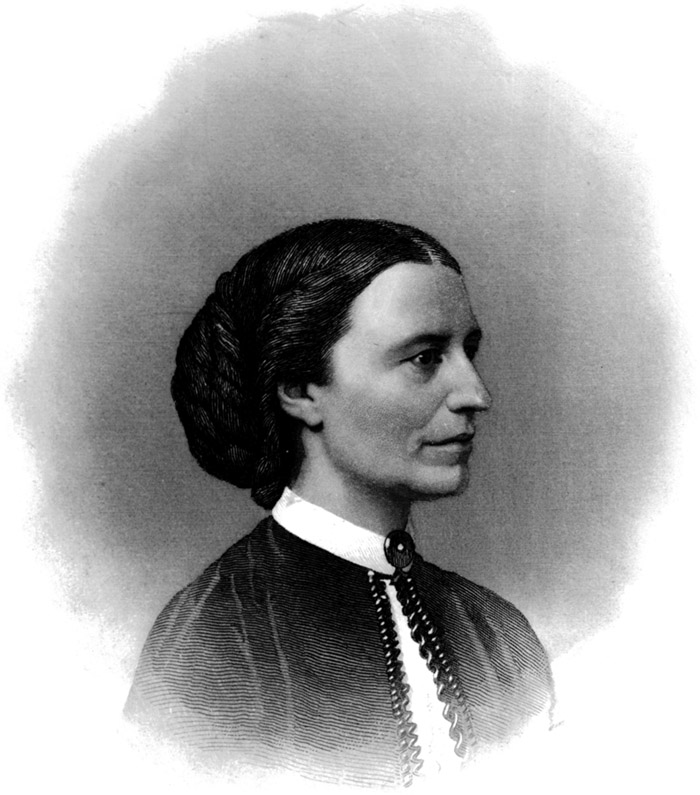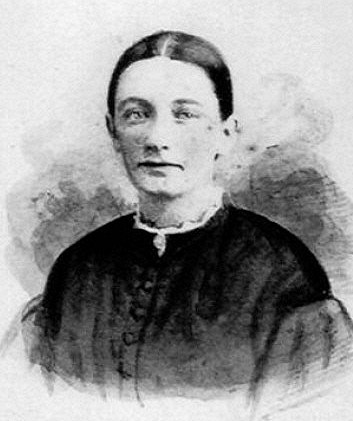California is not talked about too much in the context of the American Civil War (1861-65). It had only joined the Union in 1850 and was far from the main action in the east of the USA. However, California did have a part to play during the US Civil War. Daniel L. Smith explains.
An Independent gold hunter on his way to California, circa 1850. California’s gold helped to fund military activities during the US Civil War.
California and Statehood
It was prior to 1850 that the true nature of the Wild West existed in California, this pristine region of the country. Ideology was split, and even within the split, there was further fracturing due to cultural differences as well as consistent fighting for property rights. The discovery of gold exacerbated the issue of regional turmoil as California was pulled into the US Civil War. This is just the tip of the iceberg on how California existed during this era. Many, or almost all people, are not aware of how truly important California as a region was during the Civil War.
California and Californians themselves endured in its struggle and existence. California had essentially wrapped itself in the American Civil War in politics, finances, and culture. California ethos (or ideology) was absolutely split politically. In hindsight, it was seemingly more than “Blue & Grey” ideology in a state that was overwhelmingly Native American. California had always been home to a Native American and slave population well before being “settled” by Americans East of the Mississippi.
It all started when California made statehood in 1850. Soon thereafter in 1859, the legislature of California was split into two states – Northern California and Southern California (as Colorado Territory). Even though Southern California was part of the Union, it had strong Confederate sympathies. These Confederate ties were due to the large number of Southerners who had transplanted to the Southern California area during the famous Gold Rush. This mass-relocation showed its evidence in the 1860 presidential elections. Lincoln had received only 25% of the Los Angeles vote.
On the brink of the Civil War California chose the Union, abandoning three other choices: secession, neutrality, and independence. Arguments and counterarguments were made from every political and civic level of the community. It seemed as though some people were in doubt and tossed about in which decision it should have been. Although California was isolated from the conflict in the East and despite the diversified political beliefs of her people, a feeling of loyalty to the United States and federal government was overwhelming. California Republican and Union-Democratic leaders expressed an unwavering loyalty in a multitude of ways.
Ultimately, the Unionist political candidates took over two-thirds of the votes for state government. Various estimates have been guessed regarding the number of pro-Confederates in the population in California. Indeed, although the loyalty of the state appeared evident, militias were activated.
Revenue and Turmoil
Oaths of loyalty were required for certain groups and individuals, and of course occasional military arrests were made to solidify loyalty. Regardless, California would end up being a major financial contributor to the federal government during the Civil War, because the gold deposits were direct revenue to pay for war costs. In fact, quite a large portion of the federal government’s war budget was reinforced by new gold from California’s Sierra Nevada mountain range. General Grant, in fact, said, "I do not know what we could do in this great national emergency, were it not for the gold sent from California.”
The U.S Army built and operated many fortifications along frontier trails in the Sierra Nevada mountain range in California. What people do not know is that although California leaned towards the Union, they were so wrapped up in their own civil discord at home they were not able to send organized regiments east. In late 1861, a Confederate Brigadier General Henry Sibley was allowed to open up an easier route into California through northern Arizona Territory, with further instruction to capture the gold fields in San Francisco by Confederate President Jefferson Davis. This instruction would be for the purpose of a preemptive strike against the Unionist state and in turn show how significant California really was in the Civil War.
Little did both sides realize, California was in regional turmoil on its own accord without the help of a formal war. Now, aside from the status quo bleeding “Blue & Grey,” some non-traditional elements to the war are that the settlers who had come to California were still dealing with the effects of settling tribal lands, adding negative social, criminal, and economic dilemmas between the local Native American tribes, settlers, and the U.S. government.[1]For example, in Humboldt County (approximately 271 miles north of San Francisco) on March 29, 1862, a Humboldt Times headline read, “Horrible Indian Outrages!—The Savages Become Bolder!”
In this letter submitted to the paper’s editors on March 27, 1862, the citizens of Arcata were “really alarmed at the extent of their (the Native America) evil deeds and the increased boldness and daring… “. The letter states that local natives shot Mr. Zehendner and burned his home, burnt Goodman’s house and the next day, Mrs. Brehmer’s. On Friday, March 28, Augustus Bates was shot and killed. The natives burned his house. The letter ends, “What a sudden reverse - peace and fancied security one day - death and destruction the next. Surely human life is mutable and occurrences like this bring the fact impressively to our mind. This is a gloomy letter, and ours is a gloomy town. I can think and write of nothing else.”
Still The Wild West
On April 2, 1862, many of the citizens of Arcata signed a petition asking the military to remove all the Native Americans from the county completely and push them far away. They went on to state that they didn’t want them in Mendocino County or Crescent City – as it was too easy to get back.[2] This shows that California was essentially dealing with its own problems, as well as the internal war. With a combination of civic non-cohesion of indigenous native populations, the settlers of the newly established towns, and with the two warring governments remaining active in the state, it appears as though both the centralized governments failed to see the deeper issue residing in California.[3]
Overall, there were handfuls of land skirmishes in California. Within the timeline of the war, California seemed to be most concerned with keeping political tension at a minimum. A further example of the civil issues that California would have to navigate would be the Bullion Bend Robbery.Two stagecoaches were robbed of their silver and gold near Placerville. A letter was left for authorities explaining that they were not committed criminals but carrying out a subversive operation to funnel money to the Confederacy.[4]
In 1864, a magistrate and handful of men became known as the Partisan Rangers.They sacked the property of Union-loyal civilians in the rural and outlying areas around Stockton. For the next two years they posed as “Confederate Partisan Rangers” but acted out criminally. They were found committing robberies, thefts, and murders located in the counties of San Joaquin Valley, Santa Cruz, Monterey, Santa Clara, and a few other counties located in Southern California.[5]
A final notable incident required a superb show of force by the Federal Cavalry in the streets of San Bernardino at the end of election day in September of 1864. They quelled a Confederate political demonstration during the gubernatorial elections in San Bernardino County.[6]
California’s Permanent Divide
After the Civil War ended in California the state took greater control and quickly began to integrate the counties of what would end up being on today’s political boundary maps. With the last of the Pacific coast Native Americans being rounded up to be placed on reservations and the fizzling out of what would come to be known as Westward Expansion, the state would start to consolidate its power as the new and now truly established authority in the West.[7]
It was now no longer considered the Wild West – as you would see on old black and white Western movies. Even so, the Union won the Civil War and California adopted the Union’s policies, there would always be a permanently heavy Democratic and Republican divide that would simmer beneath the voting cracks.
What do you think of the role of California in the US Civil War? Let us know below.
Finally, Daniel Smith writes at complexamerica.weebly.com.
[1]Charles B. Turrill."San Francisco and the Civil War." Museum of the City of San Francisco. Last modified 1876. http://www.sfmuseum.org/hist5/civwar.html.
[2]“Horrible Indian Outrages! - The Savages Become Bolder!”The Humboldt Times, March 29th, 1862. p.3 col. 1.
[3]Brian McGinty. "I Will Call a Traitor a Traitor: Albert Sidney Johnston." Civil War Times Illustrated, 1981.
[4]John Boessenecker (1993). Badge and Buckshot: Lawlessness in Old California.Norman: University of Oklahoma Press. pp. 133–157. ISBN 0806125101. Retrieved 21 October 2018.
[5]William B. Secrest, (2007). California Badmen: Mean Men with Guns.Sanger, Calif.: Word Dancer Press. pp. 143–147. ISBN 1884995519. Retrieved 21 October 2018.
[6]Henry Martyn Lazelle; Leslie J. Perry (1897). The War of the Rebellion: A Compilation of the Official Records of the Union and Confederate Armies.U.S. Government Printing Office. Retrieved 21 October 2018.
[7]Kevin Starr. California: A History. New York: Modern Library, 2015

















